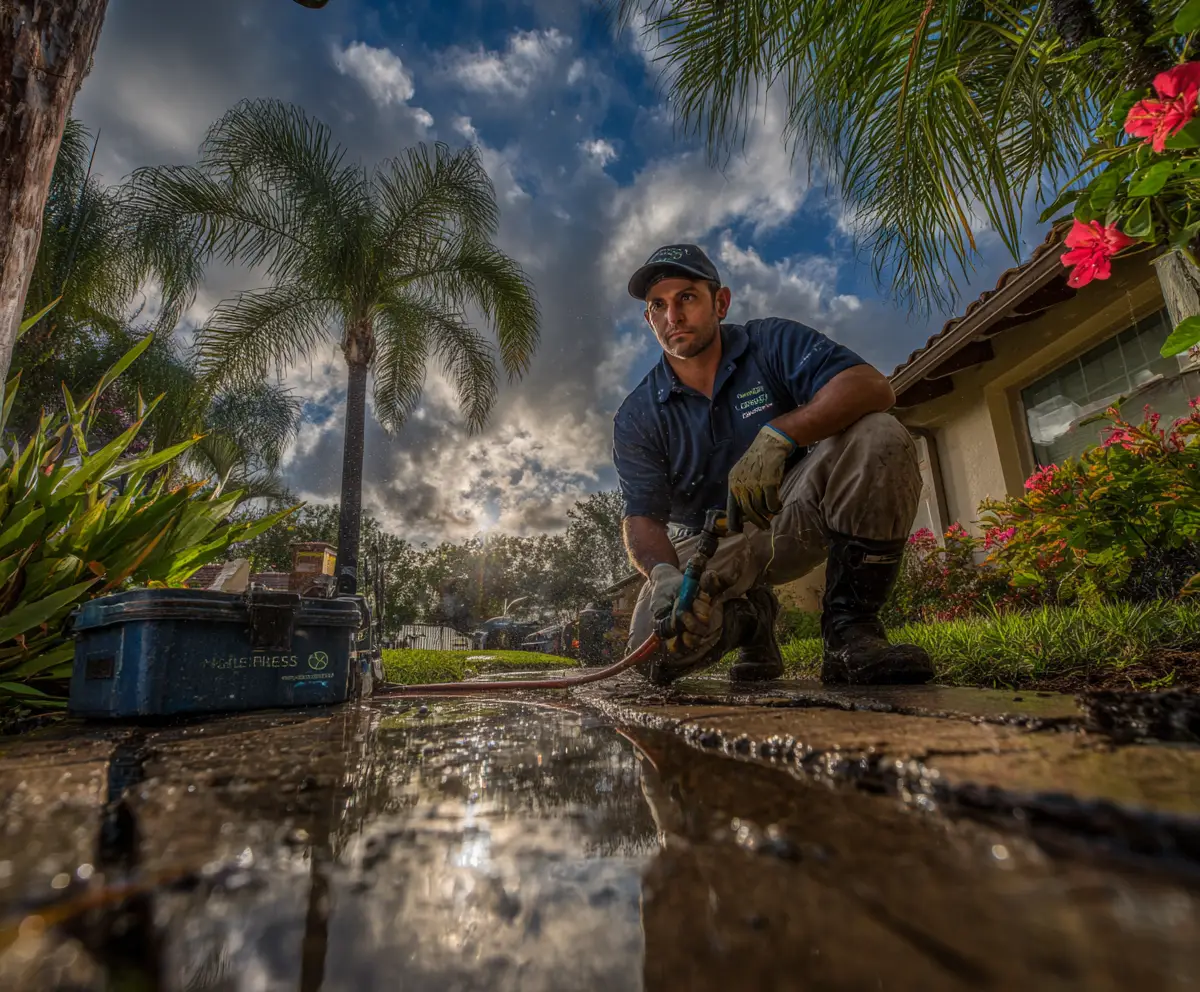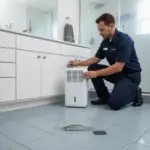Keeping Palmetto Bugs Out During Florida’s Rainy Season: Your Holistic Defense Guide
The first heavy downpour of the South Florida rainy season is a welcome relief from the heat—until you see it: a large, glossy, fast-moving palmetto bug scurrying across your kitchen floor. For homeowners in Miami-Dade and Broward County, this is an annual rite of passage. But it doesn’t have to be. At NaturePest, we believe in preventing problems before they start, using methods that are safe for your family, pets, and the delicate South Florida ecosystem. This guide provides a comprehensive, holistic strategy to fortify your home against palmetto bug invasions this rainy season and beyond.
Why Palmetto Bugs Invade South Florida Homes When It Rains
Palmetto bugs (a common name for the American cockroach) are outdoor creatures that thrive in moist, shaded areas like mulch, leaf litter, and palm fronds. The rainy season disrupts their habitat with flooding and saturation, driving them to seek higher, drier ground. Unfortunately, our homes are the perfect refuge. The combination of abundant food sources, water from leaky pipes or AC units, and easy entry points makes your house a prime target from May through October.
The Biology Behind the Invasion
Understanding their motivation is key to prevention. Palmetto bugs are not necessarily seeking to “infest” your home in the way termites do; they are opportunistic survivors. As noted by entomologists, these pests are attracted to moisture, food debris, and shelter. The sudden deluge of a South Florida thunderstorm triggers a survival instinct to find the nearest safe harbor, which is often through gaps in your home’s exterior.
The Ultimate Holistic Prevention Checklist for South Florida Homeowners
A holistic approach is multi-layered, focusing on making your property inhospitable without relying on harsh, broad-spectrum pesticides that can harm beneficial insects and soil health.
Exclusion: Sealing Your Fortress
This is the most critical step. A palmetto bug can fit through a crack as thin as a dime.
- Seal Entry Points: Use silicone caulk to seal gaps around pipes, windows, doors, and where utility lines enter the house.
- Install Door Sweeps: Ensure all exterior doors, including garage doors, have tight-fitting sweeps.
- Repair Screens: Check window and door screens for tears and repair them promptly.
- Vent Covers: Install fine mesh screens over attic, soffit, and dryer vents.
Sanitation: Removing the Welcome Mat
Reduce the factors that attract them in the first place.
- Manage Moisture: Fix leaky faucets and ensure AC drip lines drain away from the foundation. Use a dehumidifier in damp areas like crawl spaces.
- Secure Food Sources: Store food (including pet food) in airtight containers. Avoid leaving dirty dishes in the sink overnight. Regularly clean under appliances.
- Handle Trash Wisely: Use trash cans with tight-sealing lids and take the trash out regularly.
Landscaping: Creating a Protective Barrier
Your yard is the first line of defense.
- Create a Gravel Border: Maintain a 12-18 inch gravel or stone barrier between your foundation and any mulch beds. This creates a dry, less attractive zone.
- Trim Vegetation: Keep shrubs, trees, and branches trimmed back from the house to eliminate bridges.
- Manage Mulch: Avoid piling mulch high against the foundation, as it retains moisture and provides habitat.
When DIY Isn’t Enough: The Value of Professional Holistic Treatment
Even the most diligent homeowner can miss hidden entry points or have a property that’s particularly vulnerable. This is where professional holistic pest control becomes essential. NaturePest offers targeted exterior treatments using plant-based insecticides and desiccants like diatomaceous earth that are lethal to palmetto bugs but safe for mammals. We focus on creating a protective barrier around your home’s perimeter, treating key harborage areas, and providing ongoing monitoring, especially crucial during the peak rainy season. Our residential pest control plans are designed for the unique challenges of South Florida living.
Palmetto Bug Prevention: DIY vs. Professional Service
| Feature | DIY Methods | NaturePest Professional Service |
|---|---|---|
| Effectiveness | Good for maintenance; may miss hidden entry points | Comprehensive; targets entry points and creates a lasting barrier |
| Cost | Low upfront cost (materials) | Investment in long-term, guaranteed protection |
| Safety | Varies by product chosen | Family-safe, pet-safe, and eco-friendly protocols |
| Time & Effort | High; requires consistent effort and vigilance | We handle it efficiently, with regular scheduled visits |
| Guarantee | None | Service guarantee; we’ll return if pests do between treatments |
| Ideal For | Minor issues and ongoing maintenance after professional service | Complete protection, especially during peak season or for vulnerable properties |
Frequently Asked Questions About Palmetto Bugs in Florida
Q1: Are palmetto bugs dangerous? Do they carry disease? A: While palmetto bugs are not aggressive and do not bite, they can pose a health risk. They can carry bacteria like E. coli and Salmonella on their bodies from crawling through garbage and sewage, which can be transferred to food surfaces and utensils. Their shed skin and droppings can also trigger allergies and asthma in some people.
Q2: I keep a clean house. Why do I still get palmetto bugs? A: A clean house is less attractive, but palmetto bugs are primarily seeking shelter from the weather, not just food. Even the cleanest home can become a refuge during a heavy storm if there are entry points. They may be living in your walls or attic and coming out at night. This is a sign you may need a pest control audit to find and seal those entry points.
Q3: What’s the difference between a palmetto bug and a cockroach? A: “Palmetto bug” is a common name for the American cockroach, which is the large, outdoor species prevalent in Florida. They are the same insect. The term is often used to distinguish them from the smaller German cockroach, which is typically associated with indoor infestations and poor sanitation.
Q4: Can I completely eliminate palmetto bugs from my property? A: It’s nearly impossible to eradicate them entirely from the outdoor environment in South Florida. The realistic goal is to manage their population and exclude them from your living spaces. Consistent prevention and professional barrier treatments can reduce indoor sightings to zero, even during the heaviest rains.
Don’t wait for the next storm to send pests scurrying into your home. Proactive, holistic protection is the key to a pest-free rainy season. Let NaturePest fortify your South Florida home. Contact us today to schedule your holistic pest control service or call us at 786-222-7069.



